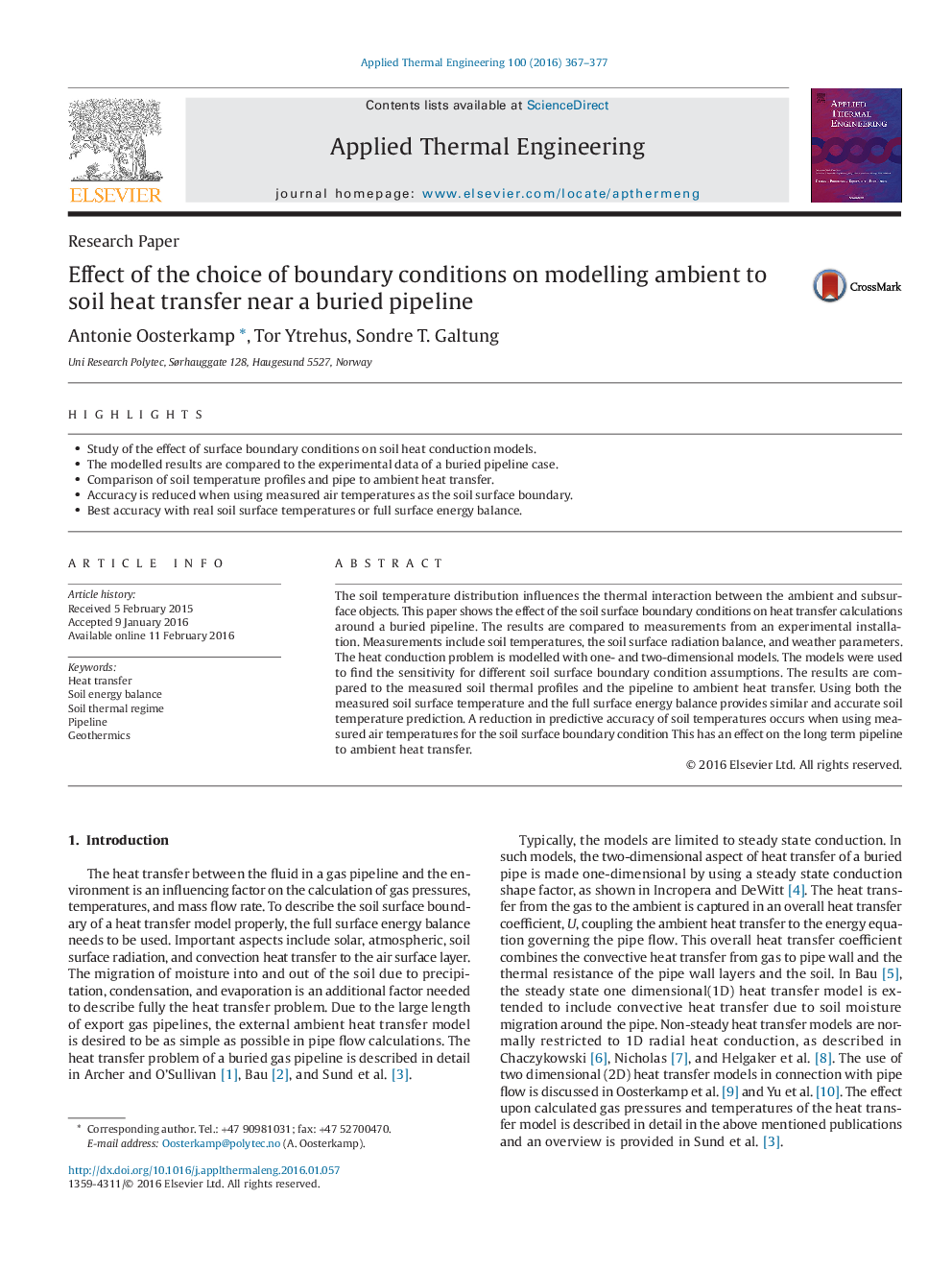| Article ID | Journal | Published Year | Pages | File Type |
|---|---|---|---|---|
| 644875 | Applied Thermal Engineering | 2017 | 11 Pages |
Abstract
The soil temperature distribution influences the thermal interaction between the ambient and subsurface objects. This paper shows the effect of the soil surface boundary conditions on heat transfer calculations around a buried pipeline. The results are compared to measurements from an experimental installation. Measurements include soil temperatures, the soil surface radiation balance, and weather parameters. The heat conduction problem is modelled with one- and two-dimensional models. The models were used to find the sensitivity for different soil surface boundary condition assumptions. The results are compared to the measured soil thermal profiles and the pipeline to ambient heat transfer. Using both the measured soil surface temperature and the full surface energy balance provides similar and accurate soil temperature prediction. A reduction in predictive accuracy of soil temperatures occurs when using measured air temperatures for the soil surface boundary condition This has an effect on the long term pipeline to ambient heat transfer.
Related Topics
Physical Sciences and Engineering
Chemical Engineering
Fluid Flow and Transfer Processes
Authors
Antonie Oosterkamp, Tor Ytrehus, Sondre T. Galtung,
